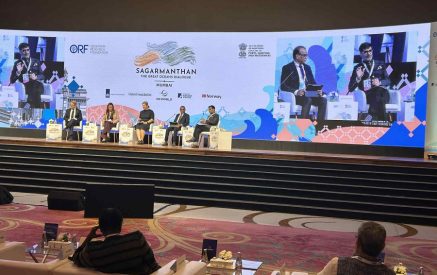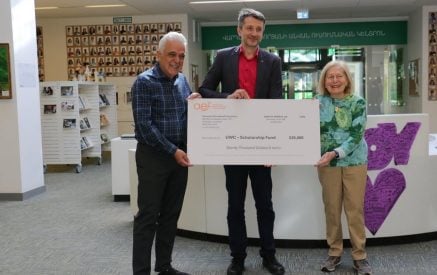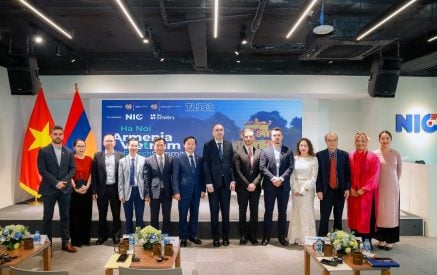Yerevan, February 23 – A new study released by the World Bank that evaluated the on-going curriculum reform in Armenia finds that students, who studied with the new curriculum under a two-year pilot, made significant learning gains in both math and science subjects, equivalent to six months of additional learning.
In 2018, Armenia embarked on an ambitious curriculum reform in science, technology, engineering, and math (STEM) subjects, and while the reform process is still underway, assessing the progress to-date provides valuable lessons that can contribute to the global knowledge base on implementation of the education reforms. With the support from the European Union , the World Bank partnered with the Ministry of Education, Science, Culture and Sport of Armenia in designing and piloting a new STEM curriculum for grades 1 to 12 in schools, focusing on student-centered instructional methodologies and teaching methods.
The “Curriculum and Learning: Towards a Competency-based Science, Technology, Engineering, and Mathematics (STEM) Curriculum Reform in Armenia” report describes four key aspects of the curriculum reform process, including: 1. frameworks and design; 2. teaching and learning materials; 3. professional development; and 4. learning assessment. From the experience of the project in Armenia, several relevant messages emerge for other countries contemplating an extensive curriculum reform. The first of these lessons is the value of building local expertise and integrating stakeholder feedback for enduring capacity. Second, teaching and learning materials that effectively support implementation of the new curriculum requires a realistic and well-planned timeline and should include a feedback mechanism for the users. Third, providing high-quality training to teachers and administrators to implement the new curriculum is critical, but continued mentoring is equally or even more important. Fourth, a well-designed approach to carrying out student assessments, which is part of the reform in Armenia, helps the curriculum reform succeed. Finally, the reform process is successful when it’s data-driven and iterative.
“Curriculum reform is one of the most challenging reforms a country can undertake. But the rewards are substantial. Our evaluation of the pilot in the Tavush region of Armenia shows that the new curriculum for STEM subjects is giving a significant boost to learning – equivalent to half a year of learning. This reform will give the youth an enormous boost for a wide range of future career opportunities, including those in high-demand fields such as healthcare, engineering, ICT, and others,” said Carolin Geginat, the World Bank Country Manager for Armenia.
Read also
“The EU is happy to invest in science and creativity, being a long-term partner of Armenia in developing human capital. In this changing world, it is vital to create opportunities and offer means to address the main challenges we all face. Keeping up with contemporary methods and technologies, as well as strengthening the National Center for Education Development and Innovation laid down the path for further reform implementation based on the successful pilot in Tavush marz. EU committed to support the roll-out of STEM pilot in Tavush for other 3 marzes – Ararat, Kotayk and Gegharkunik, enhancing the green economy and climate change projects in schools and supporting digital transition in secondary education,”-noted Vassilis Maragos, Head of the European Union Delegation to Armenia.
As a result of EU4Innovation STEM Pilot project 76 general schools of Tavush region have now fully equipped laboratories of Chemistry, Biology, Physics, Geography, and ICT.
The World Bank is currently financing 10 projects in Armenia totaling $500 million. Since its inception in Armenia in 1992, the World Bank has provided around $2.7 billion from International Development Association (IDA) to which Armenia became a donor in 2023, International Bank for Reconstruction and Development (IBRD), and trust funds. The World Bank is committed to continuing its support to Armenia in its development path for reducing poverty and sharing prosperity.

























































